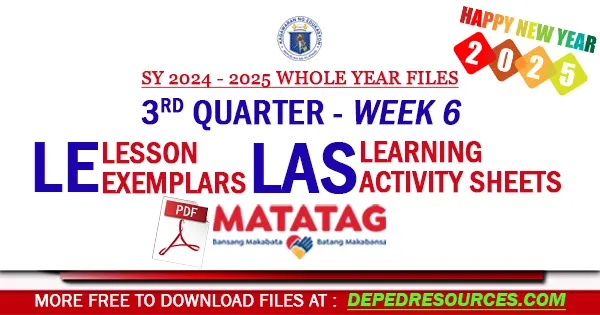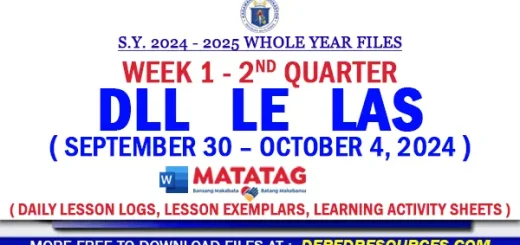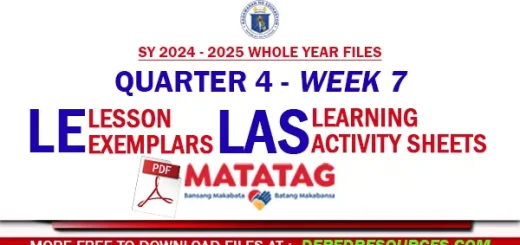Quarter 3 Week 6 Lesson Exemplars (LE) and Learning Activity Sheets (LAS) SY 2024 – 2025
What is a Lesson Exemplar (LE)?
A Lesson Exemplar is a well-structured teaching plan that helps teachers meet the diverse learning needs of their students. It provides clear strategies, methods and resources to ensure lessons are engaging and accessible to all learners. By focusing on different teaching approaches, Lesson Exemplars enable teachers to cater to various learning styles, strengths and challenges in the classroom.
Students differ in how they learn, the methods they use to process information and their levels of intellectual development. Some prefer quiet study spaces while others concentrate better with music. Visual learners may grasp concepts more effectively through diagrams while others rely on verbal explanations. Lesson Exemplars address these differences by including activities and strategies that suit a range of learning preferences ensuring every student can actively participate and succeed.
Differentiated instruction is a key feature of Lesson Exemplars. It involves adapting lesson content, processes and outcomes to match students’ unique needs and abilities. This approach allows teachers to create inclusive classrooms where every student has the opportunity to grow and succeed. By embracing diversity, Lesson Exemplars turn differences into strengths enriching the learning experience for all.
What are Learning Activity Sheets (LAS)?
Learning Activity Sheets (LAS) are organized educational materials designed to help students actively engage with lessons and better understand concepts. These sheets provide clear instructions, activities and assessments that align with specific learning goals making them valuable tools for reinforcing lessons and supporting independent learning. Similar to student worksheets, LAS promote hands-on practice and personalized learning.
A study highlighted the effectiveness of LAS in improving Grade 9 Physics students’ performance. The study compared groups using traditional teaching methods with those utilizing LAS. While both groups showed improvement, the LAS group achieved significantly higher results demonstrating the potential of LAS to address learning gaps and boost academic success.
Using LAS in teaching offers many advantages. They provide structured and guided learning, cater to various learning styles and support self-paced progress. LAS are flexible tools that can be adapted to different subjects and educational settings including traditional and online learning environments. By incorporating LAS into their methods, teachers can enhance student participation, comprehension and performance in diverse educational contexts.

 Learn about the information we collect and how it's used.
Learn about the information we collect and how it's used. Discover how we protect your data.
Discover how we protect your data. Understand your rights and choices regarding your personal information.
Understand your rights and choices regarding your personal information.














